Moss is the misunderstood star of the plant world.
With countless variations of color and texture (and endless applications in terrariums and gardens alike), there really is something for everyone.
Naturally, we all love the many styles of verdant green fluff this category of plants has to offer. But what is moss exactly? It’s certainly a plant that seems to break all the rules.
In this guide, we’re deep diving into the wonderful world of moss. What it is, where to use it, and our favorite mosses to work with.
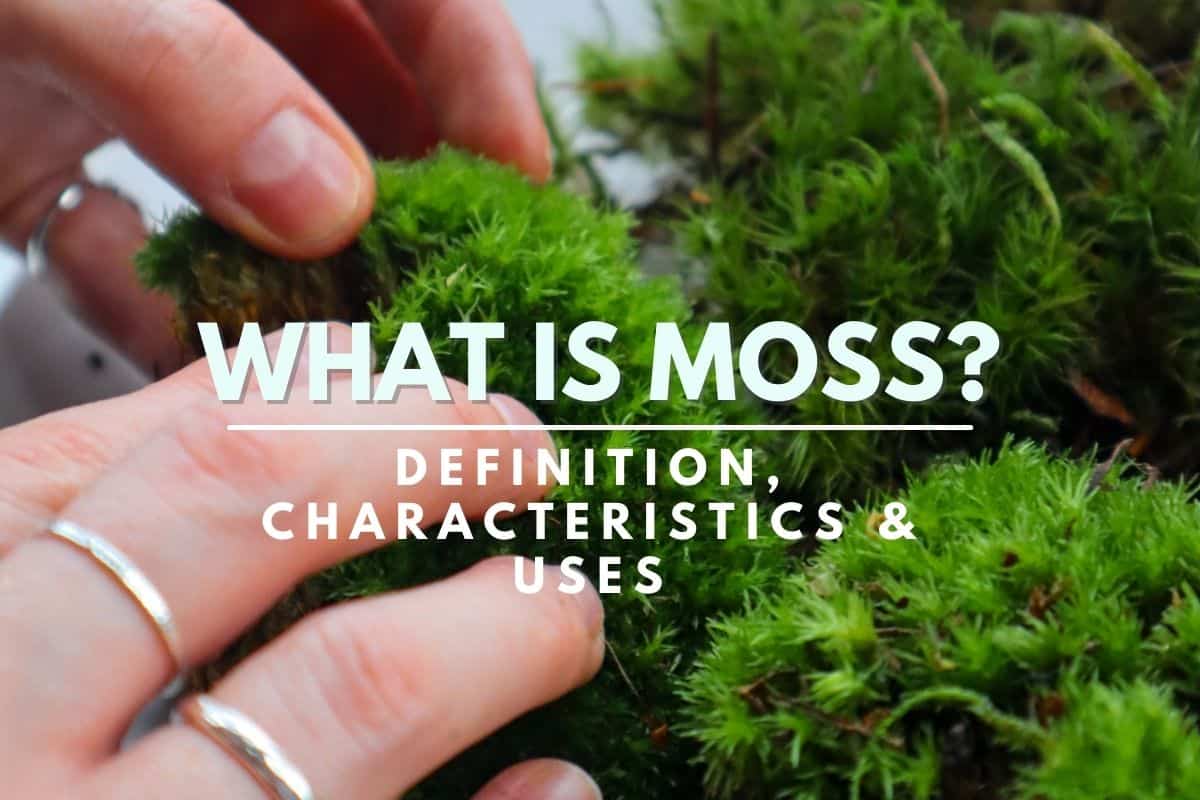
Terrarium Tribe is reader-supported. When you purchase through links on our site, we may earn an affiliate commission (at no further cost to you). 💜
Is Moss a Plant? (Quick Answer, Yes!)
Okay, so moss is certainly one of the more unique miniature plant types, but it’s still a plant nonetheless.
These rootless, non-vascular, non-flowering plants are in a category of their own.
Botanically, the scientific name of moss is “Bryophyte” (family: Bryophyta).
That said, I can absolutely see why moss is commonly mistaken for a type of fungi or lichen. The way it spreads and grows certainly has a fungi-ish quality to it.
Moss is actually an ancient plant family, amongst the first to colonize the planet. To this day, they’re hardy, versatile, and naturally found in a wide variety of biomes worldwide. From hot jungles to frosted peaks, moss can grow just about anywhere (even our concrete driveways?!).
Despite the many types of moss – over 12000 species – there are some key characteristics that they all share. Let’s take a look.
Key Characteristics of Mosses
No Roots, No Problem
Though mosses famously have no true roots, they do have root-like structures called “rhizoids.”
More like tiny filamentous hairs, they absorb water through capillary action. They don’t grow particularly long (so they can’t reach very far), but they also help the moss grip onto surfaces.
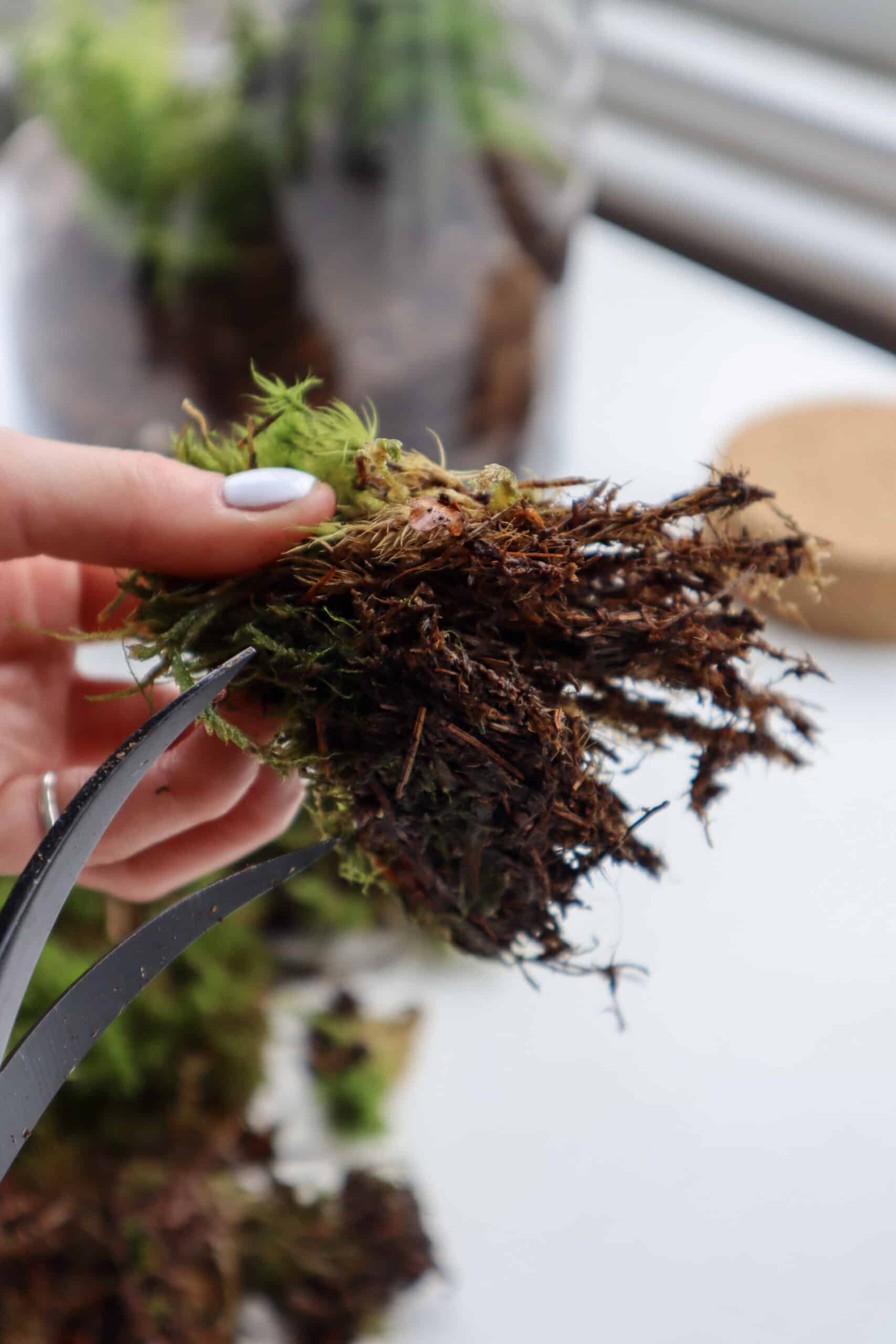
Non-Vascular Biology
The term “non-vascular” simply means that mosses don’t have the typical biological system of plant vessels (e.g., the xylem and phloem).
Instead, moss is made of simple specialized plant tissues that can transport water over short distances. That’s why moss doesn’t typically grow very tall.
Makes sense, right?
That’s also why mosses are super spongey in nature. They can’t send roots down to find water, so they need to be able to absorb water when it’s available so they can freely access it later.
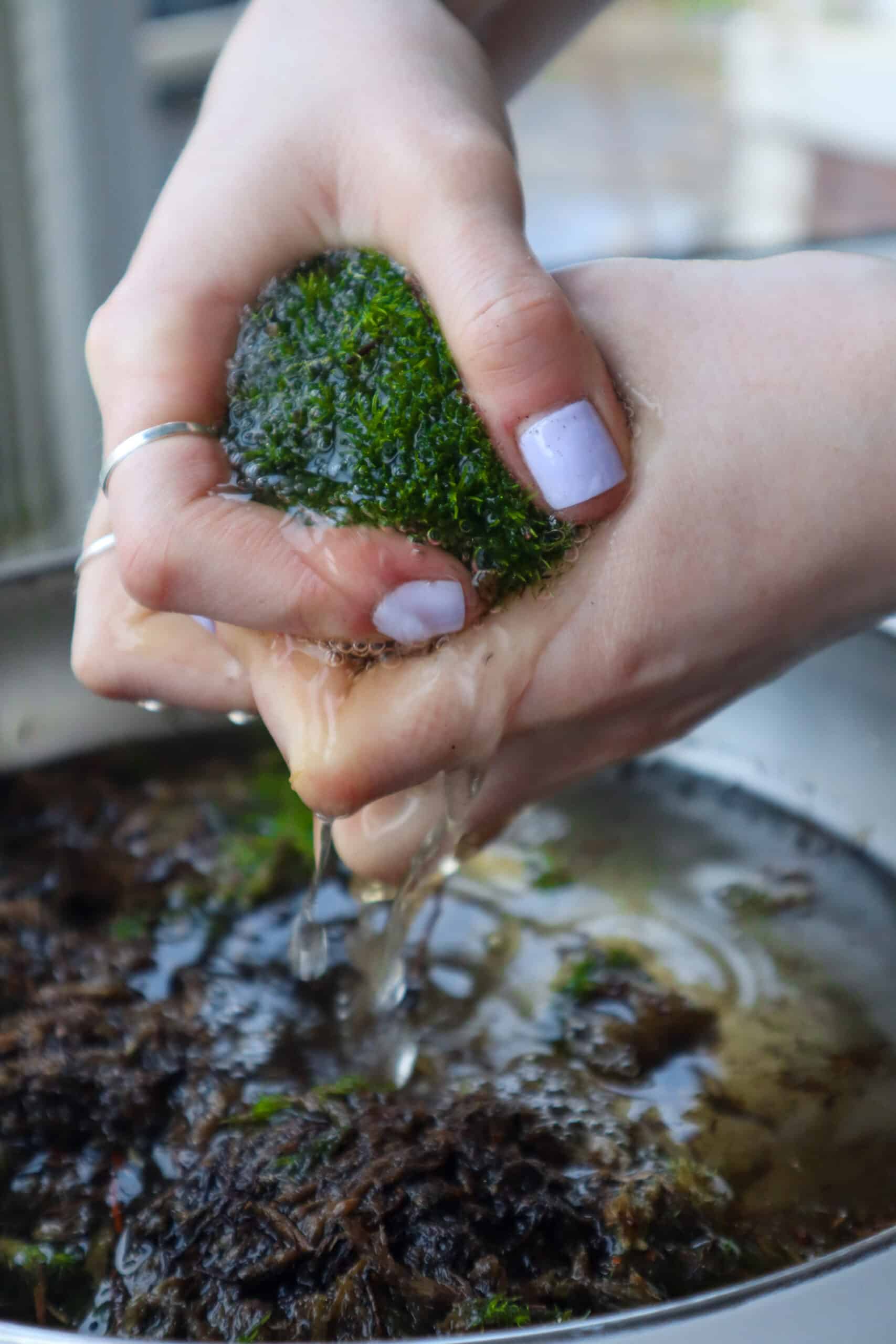
Spores Not Flowers
Instead of flowers, moss spores are the genetic distribution tool of choice.
Despite their non-flowering nature, moss can still reproduce both sexually and asexually.
The moss life cycle still follows the typical plant process through two distinct stages: the gametophyte and the sporophyte. Though, it’s a little different from most plants in that the dominant phase is the former.
Asexual reproduction is much more straightforward and typically happens in response to damage. For example, an individual plant can separate itself into separate plants (though moss has a habit of looking like one big entity).
Teeny Tiny Leaves
You’d be forgiven for thinking moss has its own unique structures instead of leaves, but they are still leaves.
Albeit, super tiny ones.
At only millimeters in length and often only one cell thick, they look more like little green fibers rather than leaves as we know them. But they still function in exactly the same way.
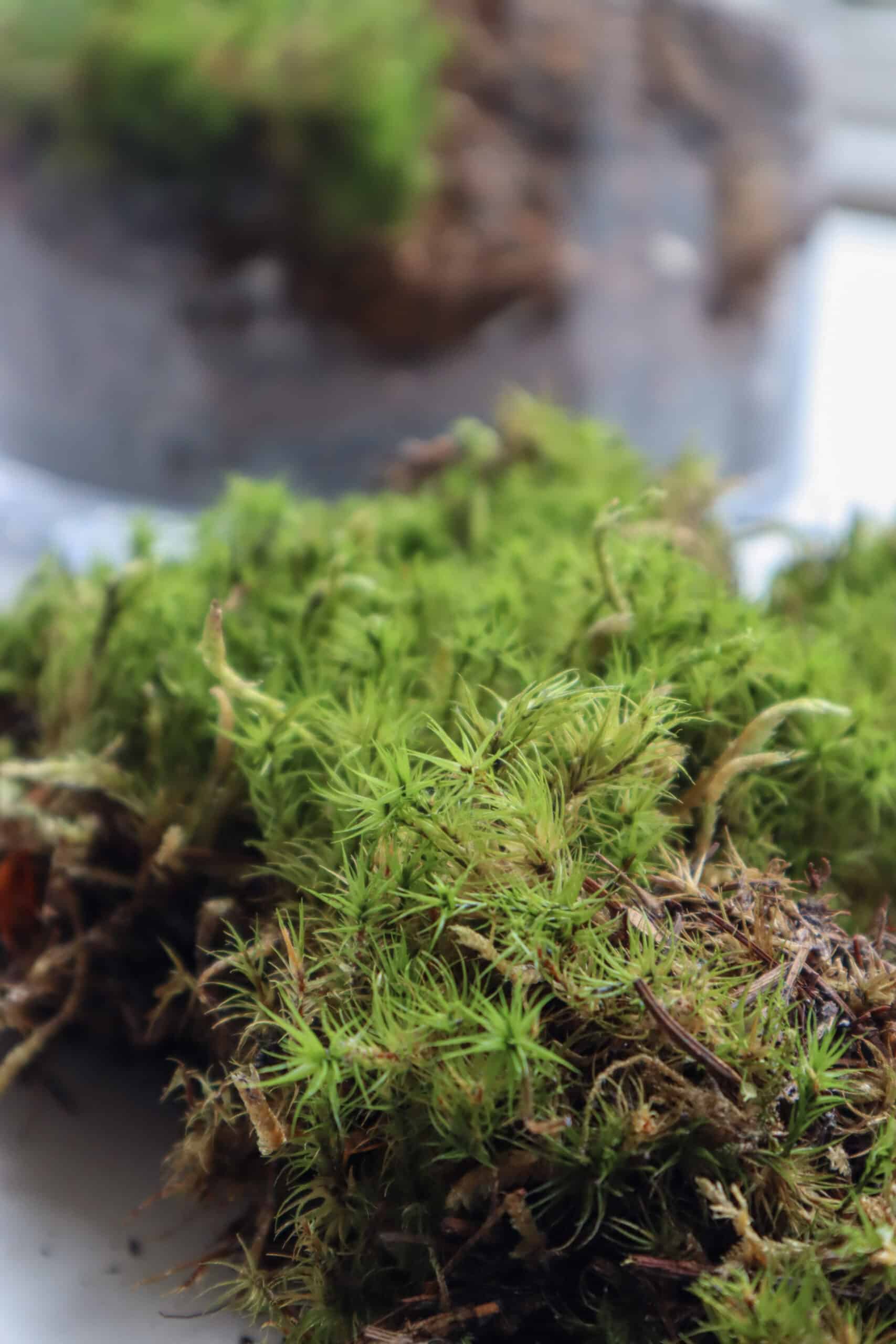
Creative (and Practical) Moss Uses
Being such a versatile plant, moss has various uses in different hobbies and industries.
Terrariums/vivariums – Moss is a key ingredient in every naturalistic setup. It can be used to highlight areas, cover exposed substrate, and pull the whole look together. In the case of a mossarium, it’s the only plant! Plus, Sphagnum Moss and peat moss both play utility roles.
Crafts – From traditional floristry to living walls, moss is the natural material of choice for many a piece of art, particularly because it preserves very well, so you can have a pristine piece of “living” moss artwork all year round.
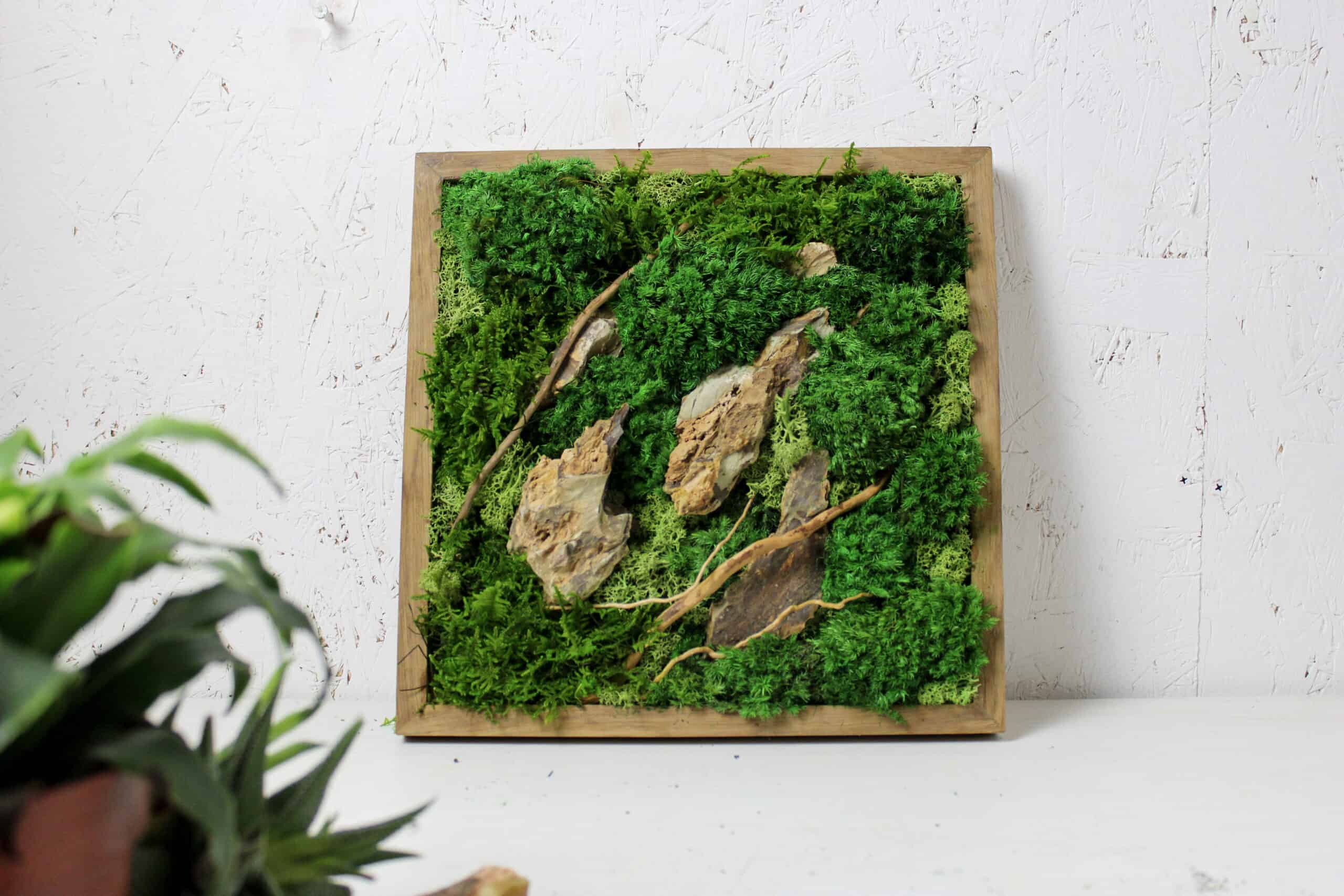
Air purification – Compared to other plants, moss cleans the air more effectively due to its huge surface area. One company claims its moss walls can filter more than 250 trees’ worth of pollution, and they’re already being rolled out in Berlin.
Insulation – In the wild, moss has a protective effect on the soil beneath, insulating it from the more extreme warmth and cold. We can use this effect to our advantage in our homes through moss walls, keeping them cooler in Summer and warmer in Winter. *Provided you can utilize a species suited to your outdoor environment.
Types of Moss Species
Moss is a broad and diverse family of plants.
There’s a lot to consider with everything from rare exotic tree mosses to the common mosses you’ll find in your local creek (or even on your roof).
Thankfully, we do have ways of identifying and categorizing them.
- Acrocarpous moss grows in clumps, which makes it great for adding texture to a terrarium or art piece. Common choices for artworks and terrariums include Mood Moss (Dicranum scoparium) and Cushion Moss (Leucobryum glaucum).
- Pleurocarpous grows in sheets, making it great for ground cover in a variety of settings. Hypnum Moss and Fern Moss (Thuidium delicatulum) can be excellent choices for temperate moss gardens and tropical terrariums.
Over to You
Now that you know what moss is and what it’s used for, we have a variety of guides depending on what you do next.
You could check out our terrarium moss guide for more guidance on how to use it or check out our selection of live moss for terrariums if you want to dive right in.
Happy moss hunting!
